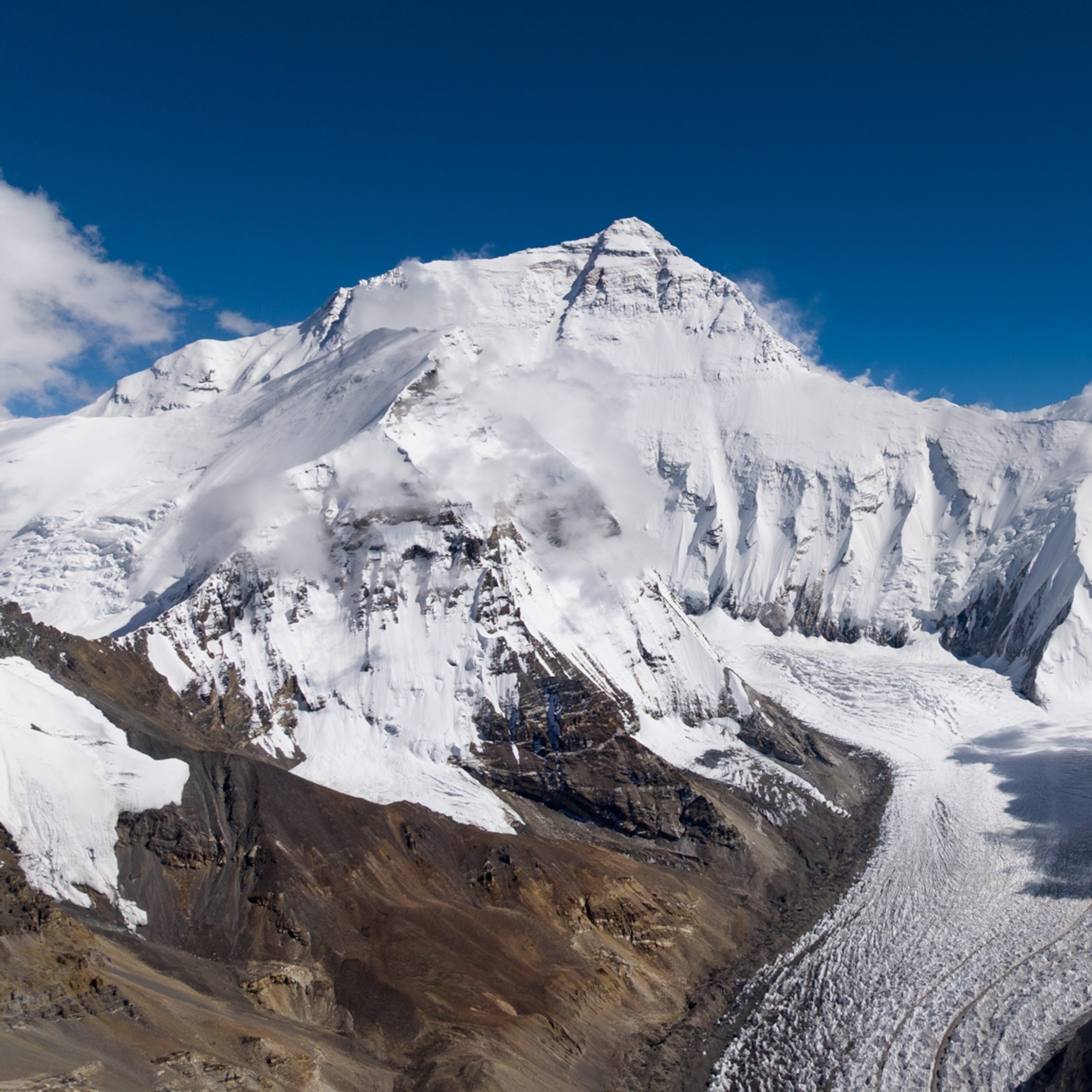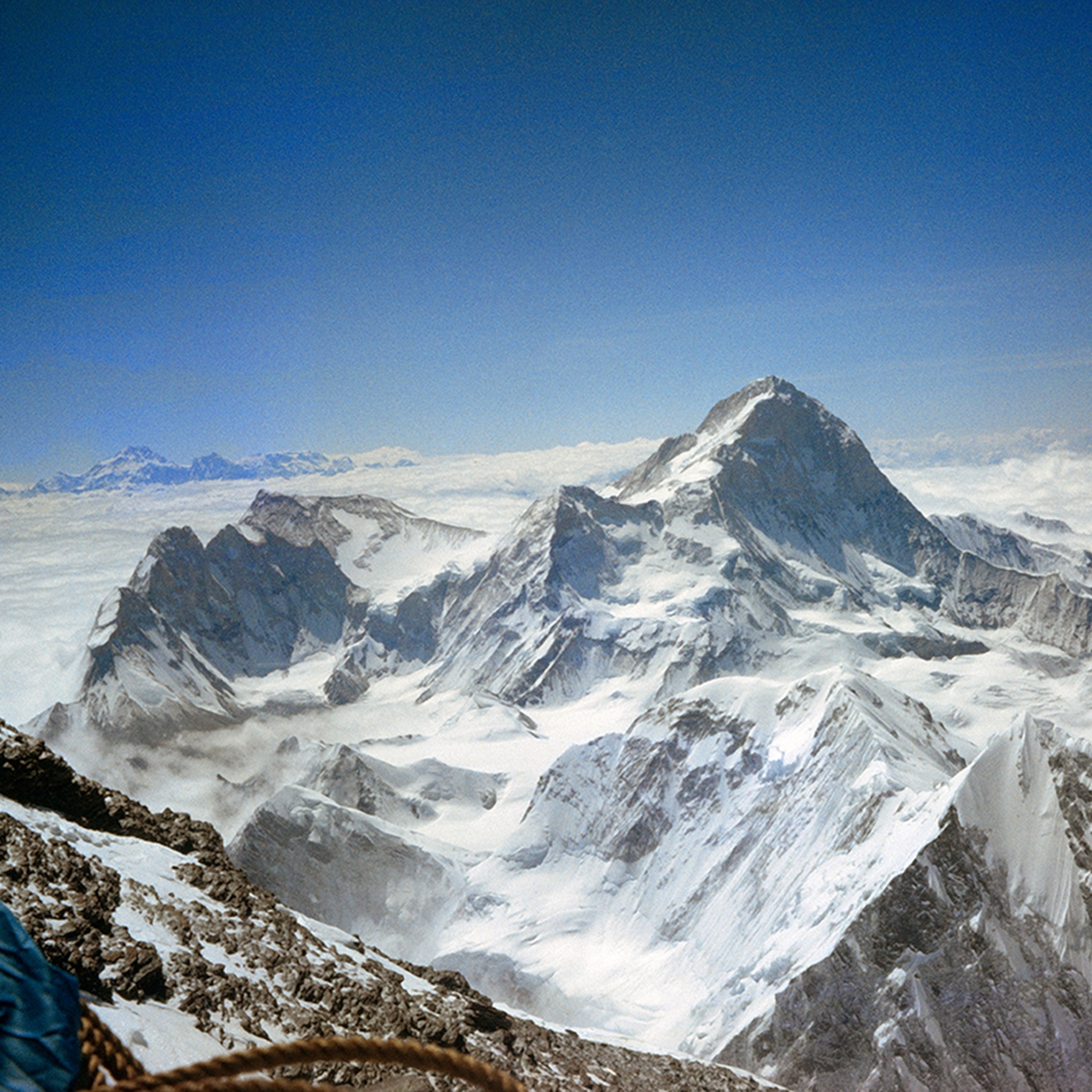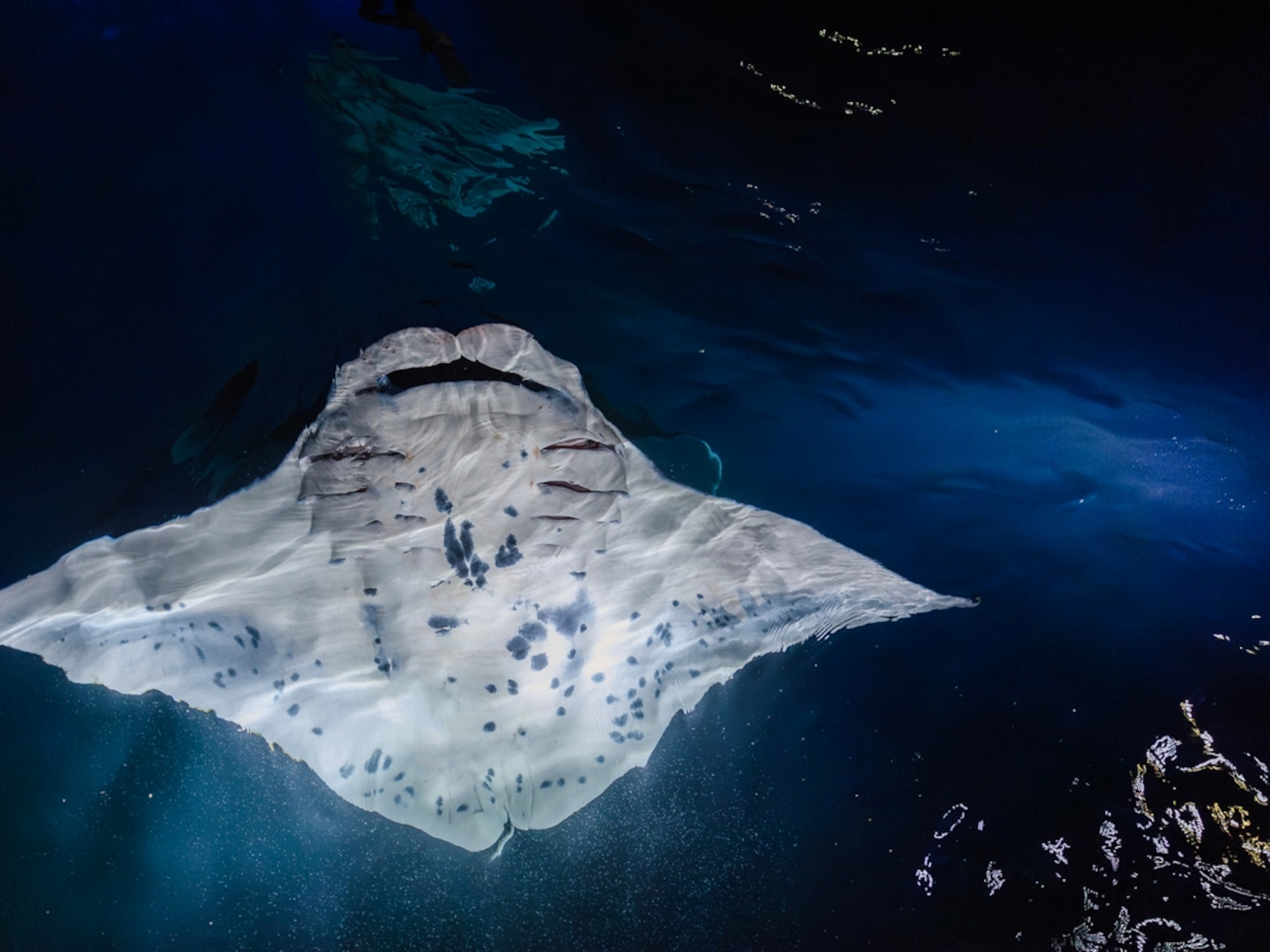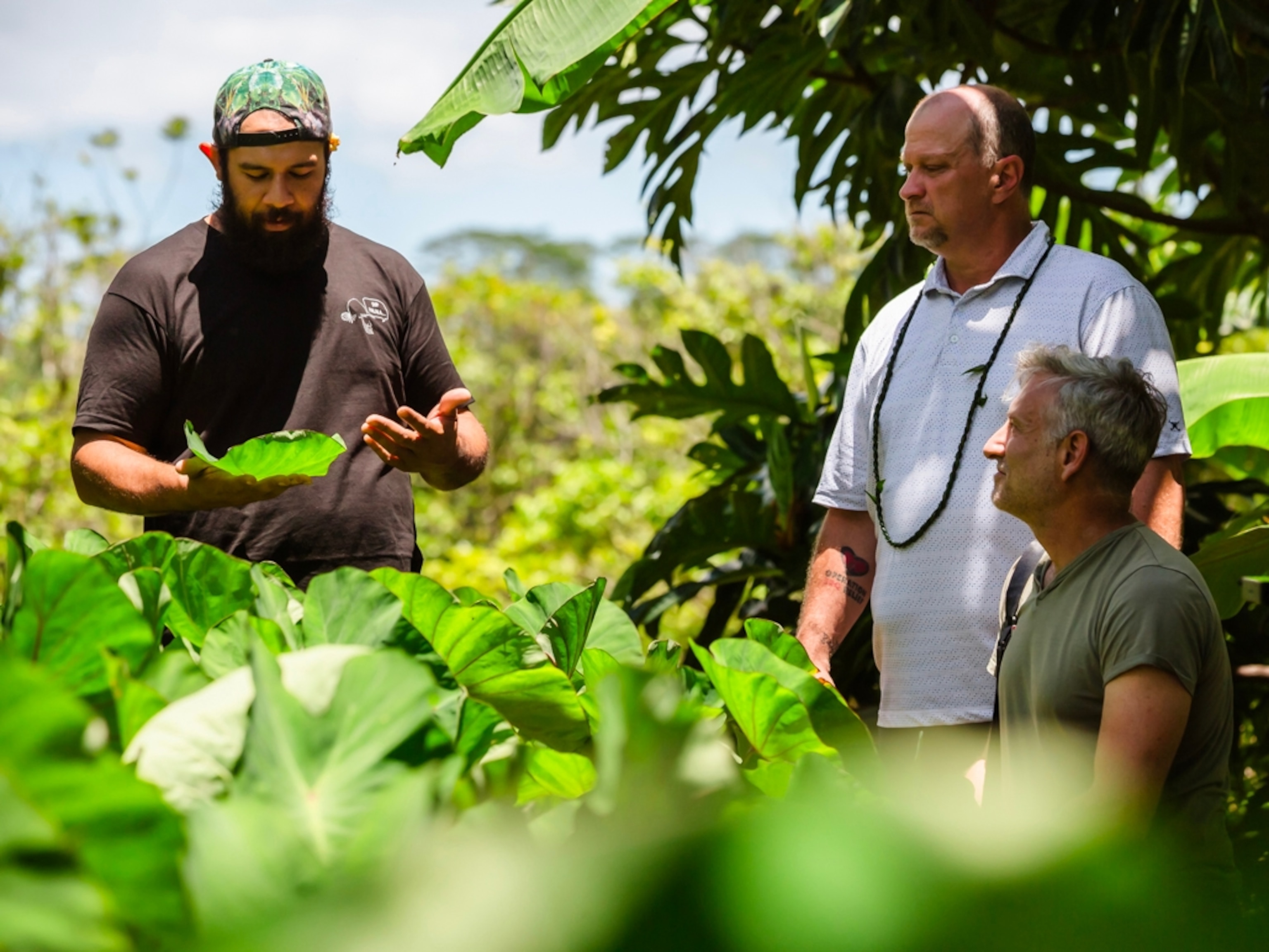
Flight Crew Tells of Harrowing Rescue to the South Pole
On the 1,500-mile (2,414-kilometer) trip to pick up two sick patients, the crew battled iced-up wings, an overloaded cabin, and icebergs blocking the runway—and still arrived in one piece.
The icy runway shimmered in dim moonlight. Wisps of powdery snow rippled over its surface, driven by a brisk wind. At one end of the strip, a tiny airplane slid on skis over the ice.
Propellers spun in reverse as the pilot edged the plane backward, toward the rear of the runway. The Twin Otter was loaded to its maximum weight, including 7,000 pounds (3,175 kilograms) of fuel. The runway was short. The pilot would need every inch of it to get off the ground.
It was the best airstrip in this part of Antarctica, 67 degrees south of the Equator, midway down the mountainous peninsula that reaches toward the tip of South America. Water lay on either end of the strip—the dark, choppy waters of Ryder Bay to the rear of the plane. And on the far end, staring down at the pilot, lay an unforgiving chaos of ice sculptures: icebergs tilted in the water like Spanish galleons run aground, held fast by an apron of ice where the sea surface had frozen for winter.
The twin spires of one berg reached five stories into the air. Its sheer face glowed in the headlights of two snowmobiles. The crew here at Rothera Station had parked the skidoos at the end of the runway to illuminate those icy obstacles. Fifteen of the station crew waited nearby, just in case. Several divers waited in boats, dry suits on, poised for an urgent rescue if the plane clipped a berg and plunged through the ice, into water.
Wallace Dobchuk, the pilot, looked once more at the icebergs, then reached overhead and pushed the throttle lever forward. Propellers roared and the plane skittered down the runway. Its front ski lifted off the ground. Its nose rose into the air. Thai Verzone, one of four people on board, watched with relief as the icebergs slid past underneath. If all went well, they would reach the South Pole in nine hours.
It was a daring journey to undertake—a midwinter flight to the heart of Antarctica to evacuate two workers who had fallen dangerously ill. The Twin Otter took off at 8 a.m. on June 21, just one day after the Southern Hemisphere’s winter solstice. South Pole Station had been in darkness since late March. The last plane had departed in February, and no plane was set to land there again until late October, after daylight returned.
Only two other times in the last 60 years has a plane landed at the station during winter—both times to evacuate workers at risk of death. But even those flights had not occurred so deep into winter.
Other workhorses, such as the military’s C-130 Hercules, fly into Antarctica, but only the Twin Otter can make such a journey in winter. Its simple hydraulics, pulleys, and cables controlling the flaps and rudder can withstand temperatures below minus 90°F (minus 68°C). Its airframe can survive bumps and turbulence even as the metal stiffens and grows brittle in the bitter cold.
But the Otter is a small plane, with a maximum range of just 800 miles (1,287 kilometers)—far short of the 1,500 miles (2,414 kilometers) from Rothera to South Pole. Kenn Borek Air, the Calgary-based company operating this plane, had modified it for the mission.
The main cabin where Verzone, the medic, sat was crowded with two tanks newly bolted to the floor, each the size of a bathtub. Together they held 500 gallons (1,893 liters) of extra fuel. Strapped beside them were two barrels holding another 110 gallons (416 liters). If fuel ran low, Michael McCrae, the flight engineer, would pop open the barrels and refuel the plane from inside the cabin, allowing it another 60 minutes in the air.
The extra weight had shifted the plane’s center of gravity farther back than normal. So as the Otter rose into the dark winter sky over Rothera, its nose pointed awkwardly upward. It was an inefficient way to fly but unavoidable for now. Dobchuk, the pilot, and Sebastian Trudel, the first officer, would carefully manage the situation, pulling fuel first from the rear tank in order to shift the center of gravity and nudge the plane’s nose down over time.
After 30 minutes the plane climbed into a vague, dark ceiling, a layer of clouds that posed the biggest obstacle to reaching the South Pole.
Trudel crept over oxygen cylinders and bags of survival gear as he moved from one window to another, to examine the engines and wings. Cracks rang out like sharp hammer blows on the outside of the plane.
These clouds were primed for a perilous situation that aviators call icing. The tiny cloud droplets, supercooled to minus 20°F (minus 29°C), had remained liquid. But now, they coalesced into ice as they came in contact with the plane. Trudel watched as rough films of ice began to grow on the wings. Now and again, a chunk of ice flew off one of the propellers and struck the fuselage with a crack that startled Verzone.
Ice can change the shape of a wing, disrupting an aircraft’s lift. As Trudel watched the wings, McCrae, the mechanic, remained beside the extra fuel tanks, lest he receive a call from the cockpit alerting him to lighten the plane’s load. If that happened, he would open a valve, dumping 1,500 pounds (680 kilograms) of fuel into the sky in a matter of seconds. “I’ve never actually had to do it,” he says. But even absent that kind of crisis, these icing clouds might still scuttle the mission by forcing the plane to return to Rothera.
Even routine weather poses a challenge to air travel in Antarctica. Verzone and the three airmen had waited several days in Punta Arenas, Chile, monitoring forecasts over what some scientists call the Southern, or Antarctic, Ocean, before they departed for Rothera.
The Southern Ocean, surrounding Antarctica, resembles no other place on Earth. A procession of spiraling, cyclonic storms constantly swirls around the coastlines of Antarctica. The storms span hundreds of miles. Powered by extreme temperature differences between the icy continent to the south and warmer air to the north, they can generate winds over 60 miles (97 kilometers) an hour and ocean swells exceeding 30 feet (9 meters). The winds push icebergs weighing millions of tons, driving some of them aground in shallow water, creating graveyards of shipwrecked bergs like the one at the end of the runway at Rothera Station. And, of course, these storms can spawn icing clouds.
Dobchuk and his crew had caught a narrow, moving corridor between two storms on June 20, to fly from Punta Arenas to Rothera. By the time they launched from Rothera on the morning of June 21, the weather was worsening once again; the next storm was approaching. Squeaking out of Rothera ahead of that storm was a gamble—but it paid off.
An hour or two out of Rothera, the Twin Otter climbed above the icing layer. Freed of that danger, it would be able to outrun the southernmost tentacle of the storm and reach the cold, clear atmosphere of the continent’s interior.
The flight was quiet and dark. No lights below, just an occasional reflection of moonlight off the West Antarctic Ice Sheet. One time a jagged shadow cut across that reflection, the silhouette of the Pirrit Hills, an isolated chain of rock outcrops barely poking through mile-thick ice—the only bit of exposed earth or rock for many miles around.
- National Geographic Expeditions
“Very lonely,” recalls Trudel when asked about that flight from Rothera to the South Pole. He checked in hourly via satellite phone with Joint Base Charleston, a military hub in South Carolina. And he spoke by VHF radio with the winter crew at McMurdo Station, a thousand miles (1,609 kilometers) west. McMurdo ferried messages to and from the South Pole, since direct communication between the plane and the pole wasn't possible for much of the flight. Plenty of people were supporting the mission from far away, says Trudel, “but you’re still in a little tiny bush plane flying over land that is just frozen.”
“You’re halfway through the continent and you know no one is around,” says McCrae. “That’s a humbling feeling.” He spent much of the flight alone at the rear of the cabin, where a crack in the door seal let in a steady stream of cold air. He sheltered in his sleeping bag as he watched over the fuel tanks.
They reached the pole at 5:40 that evening. The runway was marked by a row of orange-glowing “burn barrels”—steel drums, waist high, filled with burning wood and gasoline. The temperature was a balmy minus 75°F (minus 59°C).
The crew parked their plane on a wooden platform to prevent it from freezing to the snow, a lesson learned in the two previous winter evacuations. The four visitors slept overnight with oxygen cannulas in their noses to fend off altitude sickness in the high, thin air of the Polar Plateau. As they slept, the storm that they had outrun earlier that morning passed over Rothera, reducing visibility there to a few hundred yards.
The following morning, the plane was warmed for two hours before takeoff. One massive air blower heated each engine; a third blew air into an open hatch to reheat the hydraulic fluid that moves the Otter’s wing flaps. The fluid congeals in the cold “like maple syrup,” says McCrae. Normally it should be almost as thin as water.
The two extra barrels of fuel were left behind at the pole; in their place, Verzone brought the two sick workers onboard. He gave them oxygen masks and monitored their blood oxygen as the plane climbed above 12,000 feet (3,658 meters).
By the time they returned to Rothera on the evening of June 22, the storm had passed—but another was on its way. Verzone and the patients spent barely an hour at the base before boarding another Twin Otter, which ferried them over the Southern Ocean, back to South America, back into a world of daylight.







